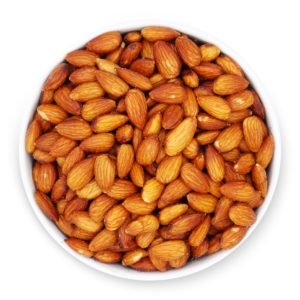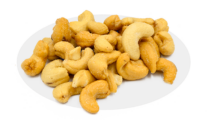Written By Sam Henselijn
Almonds are a nut that almost everyone is familiar with. Despite their reputation as a nut, almonds are the seeds of the almond tree’s fruits. Almonds come in a wide range of flavors, from sweet and nutty to bitter and powerful. Almonds are a healthy supplement to any diet and will benefit your health in various ways. So, if you want to sample real almonds, try our entire raw natural almonds and include them in any recipe you choose. Continue reading for a guide to almonds.
Where Do Almonds Come From?
Almonds are native to the Mediterranean region and Central Asia, and they grow on trees as well. Almond trees are currently found throughout Europe, Africa, Asia, and California, among other places. The latter is where the majority of almonds marketed in the United States and other areas of the world originate.
Almonds originated in Iran. It was later transported to Europe and North Africa. The United States is the world’s leading producer of almonds. In 2017, it produced 46 percent of the world’s total almond crop (2.2 million tonnes). After the United States, Spain is the world’s leading producer of almonds, particularly Marcona and Valencia almonds, which are used in muffins, ice cream, and other baked goods. Besides, a guide to almonds can provide you with more information about almonds.
Are Almonds Tree Nuts?
Almond trees aren’t nuts at all. Almonds are commonly referred

to be nuts; however, they are seeds. Peach and almond trees are members of the same genus. Almonds are a sort of stone fruit known as a drupe, and while they are termed nuts, they are a stone fruit. Drupes are fruits with a hard shell that contains a seed and an outer hull. Peaches, cherries, and olives are examples of common drupes.
Are Almond Nuts?
Almonds are commonly referred to as nuts. But they are seeds. Almond trees may have been among the first trees planted by humans.
A real nut is a hard-shelled pod that holds both the plant’s fruit and seed, with the fruit not opening to release the seed into the world. Chestnuts, hazelnuts, and acorns are a few examples of botanical nuts.
Almonds are drupes, not nuts. Pistachios, cashews, and pine nuts aren’t either. Walnuts and pecans are two examples of drupe tree nuts (although confusingly, these are known as drupaceous nuts as they are difficult to categorize and are not true botanical nuts).
Almonds, walnuts, and cashews, for example, are classified botanically as seeds rather than fruits. True nuts such as chestnuts and hazelnuts, on the other hand, are technically fruits. Peanuts, as a legume, are the only exception.
Are Almonds Keto?
For many people on the keto diet, nuts, particularly almonds, are

a favorite snacking option for many people on the keto diet. Almond milk, almond flour, and almond butter are all popular almond byproducts. Are almonds, on the other hand, keto-friendly? Is their carb count simply too high to make it work?
Almonds are a keto-friendly food that may be eaten raw or roasted. Almond milk or butter that is keto-friendly can be purchased or made at home. Try L’Orenta’s roasted and salted almonds if you want a genuine yet flavorful almond taste.
While certain nuts have lower overall net carbohydrates (Brazilian nuts, macadamia, etc. ), almonds are still a 100% keto-friendly alternative.
After factoring in the fiber content, a 100-gram portion of almonds includes only roughly 8 grams of net carbs, making it relatively simple to fit almonds into your daily macros.
How Many Carbs Are In Almonds?
Almonds are indeed a moderate, high-nutrient nut. They are high in vitamin E, magnesium, riboflavin, copper, phosphorus, and manganese. Almonds provide 6 grams of carbohydrates per ounce (28 grams).
A pound of almonds has about 3 grams of carbohydrates. There are 28.23 grams of carbohydrates in one cup of almonds. You will get 8 grams of carbohydrates in 6 almonds. 6.1 grams of carbohydrates in 5 almonds.
How Much Is Protein In Almonds?
Almonds are high in protein, fiber, and lipids that are good for your heart. You can meet your nutrient requirements by adding 10 almonds to your regular diet plan.
The protein content of almonds is 0.25 grams. As a result, 10 almonds provide around 2.5 grams of protein. One ounce of almonds equals around 23 whole almonds, or one part, or serving size. Almonds contain about 6 grams of protein per 1-ounce serving.
Low Carb Keto Recipes Using L’Orenta Almonds
- Roasted keto nut mix
- Homemade almond flour keto English muffins
- Carrot flavored almond cake with rich cream cheese frosting
- Cinnamon, Blueberry, and almond butter keto breakfast shake
We hope a guide to almonds has helped you learn more about them. Almonds are not only beneficial for your health, but they will also explode your palate if you use them in a novel recipe, allowing you to enjoy food and diet simultaneously.
Sam Henselijn Author’s Biography – Meet L’Orenta Nuts CEO
Copyright 2024 L’Orenta Nuts
L’Orenta Nuts proudly holds the SQF food safety certification, symbolizing our unwavering dedication to upholding the highest standards of food safety and quality. This certification guarantees that our products undergo rigorous scrutiny, ensuring transparency, traceability, and adherence to global food safety regulations for the utmost consumer confidence.
L’Orenta Nuts has the HACCP (Hazard Analysis and Critical Control Points) certification is a systematic approach to identifying, evaluating, and controlling food safety hazards. It ensures that food products are produced and handled in a manner that minimizes risks and complies with safety standards.
Our GMP (Good Manufacturing Practices) certification ensures that a manufacturing facility adheres to comprehensive quality and safety standards while producing pharmaceuticals, food, and other consumer goods, promoting consistency, quality, and compliance with regulatory requirements.
L’Orenta is an FDA-approved manufacturing facility and has met the rigorous standards set by the U.S. Food and Drug Administration. It demonstrates compliance with regulations, ensuring the production of safe and high-quality food products.
























